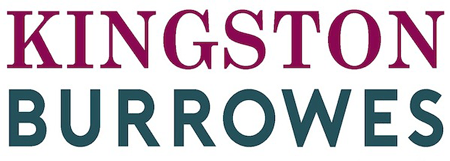Who do Statutory Accounts apply to?
Before we look at the ins and outs of Statutory Accounts, let’s first clarify which business types they apply to. Statutory Accounts will apply to your business if it is a limited company. Therefore, if you are operating as a sole trader or partnership, then you are not affected by Statutory Accounts.
The Purpose of Statutory Accounts
Statutory Accounts are often known as Annual Accounts and submission of these is a legal requirement and a matter of public record as they ensure that anyone dealing with the company has information about who they are dealing with and how financially sound they appear to be.
Businesses have a choice of how to file their statutory accounts, either as a full set of accounts, or in less detail (while still meeting the Companies House and HMRC requirements) as an abridged set of accounts if they are a smaller company.
The purpose of statutory accounts is to ensure that your legal records remain current with Companies House, and to demonstrate the performance of your company to your shareholders.
What to Include in Statutory Accounts?
The key items which must be included are a balance sheet, a profit and loss account (P&L), a cashflow statement, notes to the accounts and a directors’ report. Also included are company information pages, contents and a cover.
Below we have outlined what information each of these sections should include.
Company Information Page
Here you should include your company name and registered number, as well as your registered office address, the names of your directors and your accountant.
Directors Report
This is where you should outline the key activities of your business as well as the performance and prospects of the company. Take the opportunity to review the past year and explain business conditions and financial performance as well as any specifics which may impact the balance sheet. As well as including the names of directors (and their responsibilities) for the year in question, details of any dividends that may be paid to shareholders should also be included here.
The report should state that it has been approved by the board and it should be signed by a director.
NB: The inclusion of a Directors Report is not necessary for smaller companies. A company is deemed to be ‘small’ if it meets any two of the following conditions:
- the turnover is less than £10.2 million
- the balance sheet is less than £5.1 million
- there are fewer than 50 employees
The Balance Sheet
The balance sheet shows the value of everything owned by your business, in addition to what it owes. It would also include details of what is due to be paid up to the last day of the financial year in question.
Figures for the reporting year and the previous year should be included, as well as reference to any explanatory notes that appear in the Notes page.
The balance sheet should state that it has been approved by the board and it should be signed by a director.
Interpreting your balance sheet
From the perspective of your shareholders, the main area of interest here will be the figures which demonstrate how much available cash the business holds.
Take note of trade debtors (how much is owed to the company by customers) as well as trade creditors (the value that your business owes to its suppliers). If your customers owe large amounts, then you might want to consider introducing tighter payment terms as this would improve your cash position. Equally, by negotiating more favourable terms from your suppliers this could also strengthen your position.
A balance sheet provides perspective on your short and long-term debt, where it would be divided between current creditors (money owed within 12 months) and longer-term borrowed funds (including loans or any repayable government grants). Even within these borrowed funds, payments due in the next 12 months would be classed as current creditors, with the remainder falling under longer-term debt.
Profit and loss account
Your profit and loss account details your profits as the sum of your sales minus your costs. The following details would generally be included:
- Turnover
- Cost of sales
- Gross profit
- Operating profit
- Profit on ordinary activities before taxation
- Tax on ordinary activities
- Profit for the financial year
Your EDITDA (earnings before interest, tax depreciation and amortisation), also known as pre-tax profit, is one of the most important figures in this section. Further detail on the various categories of turnover or costs could be included in your management accounts, but they are not needed for statutory accounts.
Cash Flow statement
Small businesses will not need to include a cash flow statement, but larger companies are required to.
A cash flow statement demonstrates the cash coming into a company and the cash going out, and this would usually be broken down into money from operating activities, returns on investment, tax charges, capital spending and dividends paid.
It provides a simple overview of how money is spent in a company, although for more detail, the balance sheet shows funds due in the future.
Notes to the accounts
This is where you can provide more detail and context relating to the balance sheet or profit and loss account. The additional detail that you decide to include is up to you, but it could help to clarify figures which may otherwise be questioned by shareholders.
By adding further detail to aspects of the balance sheet or profit and loss account, you can demonstrate, whether money is owed to a bank, a company or to HMRC. Equally when you are looking at creditors, you may want to divide this detail into trade creditors, deferred income, taxes and other creditors.
You must also include a statement of the accounting principles used in the notes to accounts section.
How and when are Statutory Accounts filed
Your first set of statutory accounts must be filed 21 months after registration with Companies House. In subsequent years, the filing deadline becomes nine months after the company’s financial year end.
If you qualify as a small business (as defined earlier in this post), then you do not need to file a full set of accounts to Companies House, you simply need to file an abridged version. However, you still need to provide your shareholders and HMRC with a full version, alongside your company tax return.
Late filing fines of up to £1500 could apply if you do not submit your accounts on time.
Support with Statutory Accounts
To avoid any potential fines either through late filing or errors in the accounts themselves, it is usually advisable to seek the support of an accountant.
The Kingston Burrowes team have extensive experience of efficiently preparing and filing company statutory accounts and will be happy to help with you with what could be a time-consuming task. Get in touch with our friendly team to discuss any tax or accountancy support you might need.




